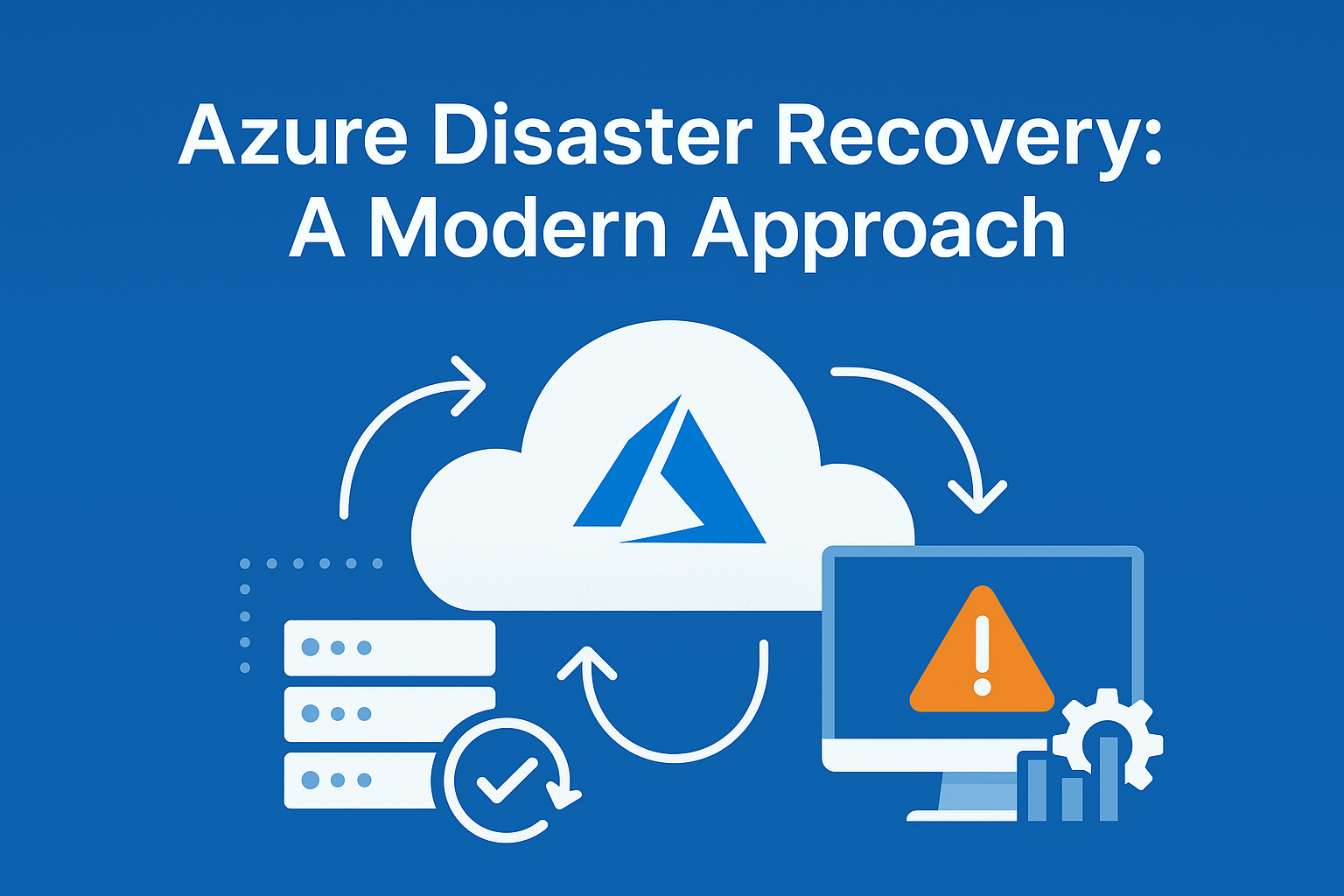Disaster recovery isn’t something new and as IT professionals, it’s something we’ve dealt with for decades, but in many cases not well. It’s common for our conversations with customers to be centre around their future-state planning. This is a core part of what we do and planning your DR solution in a hybrid world is just as important as it was when you last renewed your on-premises hardware. The common challenges we hear include:
- Squeezing out the last drop of life from ageing infrastructure while avoiding a patch solution to growing data and impacts on backup storage
- Making compromises on your DR posture due to limitations of legacy solutions
- Navigating the complex planning around SaaS migrations across HR, finance, and other key business systems
- Enabling projects through the use of idle infrastructure or unused capacity to iterate through Dev-Test-Acceptance without risking business continuity
Exploring Azure for DR can help overcome these challenges. Its flexible pay-as-you-go model won’t lock you into a fixed number of VMs or storage capacity. And as you think about how the SaaS-ification of applications reduce your on-prem footprint, Azure offers more than just offsite storage.
Azure Site Recovery enable organisations to:
- Replicate your VMs to a local Azure region and replicate them back on-prem after a recovery
- Run DR tests or failovers on demand, with costs only for what is consumed
- Avoid long-term licensing or hardware lock-in, adapting alongside ongoing transformation
Why Azure for Disaster Recovery?
1. The Reality of Existing DR Environments
Traditionally, DR environments are repurposed from aging production hardware. These setups come with significant limitations:
- Inability to support modern security standards
- Mixed workloads causing performance issues
- Ongoing maintenance and support costs
Migrating to Azure eliminates these constraints, offering a secure, scalable platform that grows with your business.
2. DR Isn’t Idle – More Than Offsite Storage
Azure offers more than “just a bunch of disks”. It’s important to understand that comparing Azure to low-cost cloud storage providers isn’t a fair comparison. Those vendors are often selling storage-only solutions at a fraction of the cost, but they lack the expansive set of services that Azure provides—integrated security, automation, monitoring, orchestration, and the ability to run production-grade workloads on demand.
Many organisations already use their DR environments for development, testing, and short-term projects. Azure supports this use case by enabling:
- Dev/Test workloads on top of the DR foundation
- DR testing in isolated environments, reducing compliance burden
- Pay-as-you-go consumption, reducing waste
- Full integration with security, monitoring, and recovery automation tools
This approach maximises value, ensures compliance, and provides true disaster recovery readiness—not just offsite storage.
3. No Long-Term Commitment – Pay for What You Use
Azure’s consumption-based model stands in contrast to traditional DR contracts that require upfront commitment. Key benefits include:
- No multi-year lock-ins or tiered pricing
- Flexible scaling of protected assets
- Ideal for organisations migrating to SaaS-based core systems like HR, finance, and asset management
Designing a DR solution
Designing a solution for your environment consists of the following steps:
Step 1: Understand Your Environment
Start by analysing your current infrastructure. Identify…
- Critical systems and their dependencies
- Recovery Point Objectives (RPO) and Recovery Time Objectives (RTO)
- Existing backup solutions and gaps
- Plan replication groups with a bias towards applications. This will ensure that you have replication consistency across multiple VMs hosting you critical applications.
- Current network bandwidth and usage patterns
Step 2: Design Your Azure DR Architecture
Azure Site Recovery (ASR) is central to Azure-based DR. For VMware workloads, ASR uses a combination of:
- Process Servers: Handle replication traffic from on-prem VMs.
- Configuration Servers: Coordinate replication and manage Mobility Agents.
- Mobility Agents: Installed on each source VM to handle snapshots and replication.
- Azure Storage & Compute: Host the target replicated VMs and associated resources.
Key design considerations:
- Use Microsoft’s ASR Deployment Planner to estimate bandwidth, storage and process server requirements.
- Replicate in batches to reduce impact during onboarding.
- Ensure high availability of config and process servers.
For example, we worked with a NSW council that needed to urgently protect 116 VMs, aiming for a 30-minute RPO for 90% of workloads. Our 7-day assessment identified that 536 Mbps of bandwidth was required to support peak replication demand.
Step 3: Implement Network and Storage Requirements
Bandwidth is critical. Initial replication and ongoing delta transfers depend on consistent throughput:
- Throttle replication during business hours if needed.
- Bandwidth usage can be fine tuned by controlling the upload and download threads per VM protected.
- Cache size on process servers must align with the data change rate of the protected VMs.
Storage:
- Use Azure-managed disks and storage accounts for durability and performance.
- Ensure you account for VM size, disk type, and snapshot frequency.
Step 4: Set Up a Sandbox for Testing
Before going live, validate your DR plan using Azure’s Test Failover capability:
- Use an isolated sandbox network to avoid impact on production systems.
- Validate that applications boot and operate correctly.
- Test authentication, data integrity, and application response times.
Regular testing helps ensure:
- Your DR plan meets its RTO/RPO targets.
- Data is consistent after failover.
- Staff are trained and ready.
Step 5: Monitor, Maintain and Improve
Once deployed:
- Regularly monitor replication health and performance.
- Review test results and update recovery plans accordingly.
- Keep configurations aligned with any changes in your production environment.
Azure-native tools like Azure Monitor, Log Analytics, and Recovery Services Vaults provide comprehensive visibility.
Summary
Planning for Azure DR isn’t just about copying VMs to the cloud. It involves:
- Designing an architecture that fits your business needs
- Validating it in a safe, testable way
- Continuously improving based on operational testing
Conclusion
If you’re planning a DR uplift or looking to improve your backup resilience, Azure is more than just a safety net—it’s a strategic enabler for transformation.

